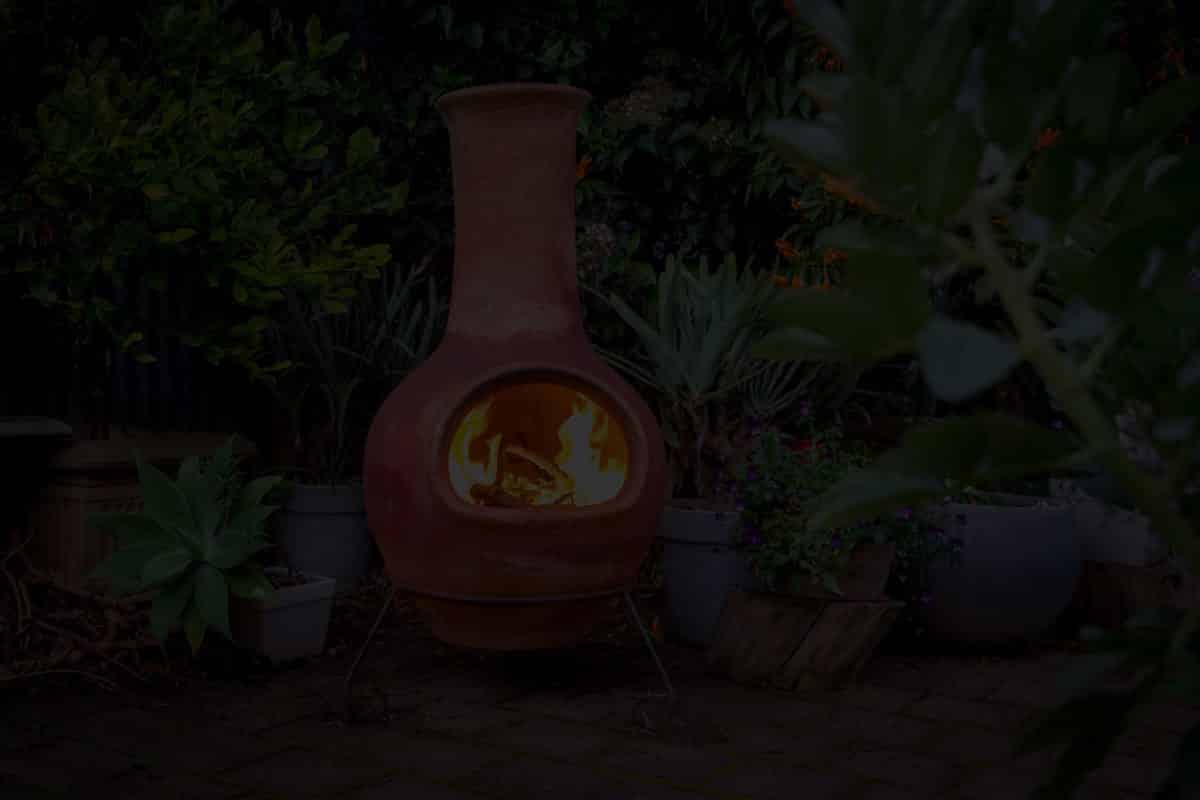How to choose a chiminea
Cast Iron Chiminea Versus Clay Chiminea – How to Choose?
Cast iron is sleek, dark, good-looking and resilient. A cast iron chiminea shoves out enormous amounts of heat. Clay is smooth, beautiful and durable. A clay chiminea throws out vast amounts of heat. Hm. How do you decide which is best for you?
About clay and cast iron chiminea
We thought it’d be handy to take a look at cast iron chiminea versus clay chiminea, and provide some sensible advice about how to choose the perfect one for your circumstances.
Cast Iron Chiminea Versus Clay Chiminea – When is cast iron best?
Cast iron chimeneas are moulded, made to be hand-assembled with nuts and bolts. A few come in one piece but most need some simple assembly. The iron absorbs the heat of the fire, radiating it out into your garden or patio in the same way as clay.
- Many come with an integral BBQ grill
- While they’re heavy, the metal stores heat for a long time so is very fuel-efficient
- Cast iron rusts, and you’ll need to protect your chiminea with cast iron paint, really easy to use
- You can use a wide range of fuels and can make a really big fire
- Cast iron will crack if the chimenea is dropped, but it’s resistant to high temperatures and frost
- As a general rule, as you’d expect, cast iron tends to last longer than clay
Here’s a link to our large cast iron chiminea collection.
About clay chiminea – When is clay best?
Heat-resistant earthenware clay is used to make clay chinimeas, moulded by hand and fired at high temperatures. The clay absorbs the heat then radiates it outwards into your outdoor space.
- Clay versions don’t usually come with a grill, but you can buy a range of special cooking equipment separately
- If you want to cook, you’ll have to handle the accessories manually. Unlike the cast iron versions, the cooking tools don’t attach to the chiminea itself
- You’ll need to cure a clay chiminea before using it – here’s how
- You need to protect your clay chiminea with an insulated cover
- From a practical standpoint, a clay chiminea is a good idea when you’re not a big fan of self-assembly. Clay ones come ready- assembled, all you do is put in on its stand and you’re ready to go
- Don’t get a clay chimenea if you’re clumsy. Clay is very durable but knocking and dropping it will cause damage. It’s rather like a giant terracotta plant pot
- You don’t want to leave it outdoors in the winter to suffer frost damage
Here’s a link to our varied clay chiminea collection. https://chimineashop.co.uk/clay-chiminea.html
Get the best of both worlds with Chimalin AFC chimineas
If you’re lost in space and can’t decide, you can get the best of both worlds in the shape of Chimalin AFC chiminseas. They’re clay, but they can be treated like cast iron, don’t rust, are guaranteed against cracking from heat and come with a five year guarantee.
Just bear in mind if you actually drop one it will crack… they’re not magic, just incredibly tough in the face of heat because they’re fired at a higher temperature than regular terra cotta clay, and glazed for extra resilience. You can read more about how we discovered them in the first place, and the slightly crazy experiments we carried out to test them, here.
The aesthetics – which do you find the most attractive?
If the practical and physical differences don’t matter, your choice is easy – it’s down to the look. They all have different shaped bodies, different curves, different shaped and sized chimneys, different legs and stands. Some have fancy handles, some have decoration, some are painted and some are plain.
Both clay and cast iron come in a vast array of designs, styles and variations. Clay is softer on the eye, more natural-looking. Metal is man-made and looks it, but is softened by the lovely curved shape of the chiminea. Which will suit the style and personality of your garden best? From traditional-looking to steam-punky and everything in between, there’s something to suit eveeryone’s taste and pocket.
Size and weight matters – measure first
Size matters, too. Actually measure the space where you’ll be siting your chiminea, so you know for sure what will fit, what’ll be too small and what’ll be too big. Both clay and cast iron are heavy, and the biggest chimineas are very heavy indeed. Bear the weight in mind, too. Can you handle it?
Help from friendly chiminea experts
If you need help with that side of things, or anything else about cast iron chiminea versus clay chiminea, give us a call or email us. We don’t just sell chimineas, we’re experts in them.

